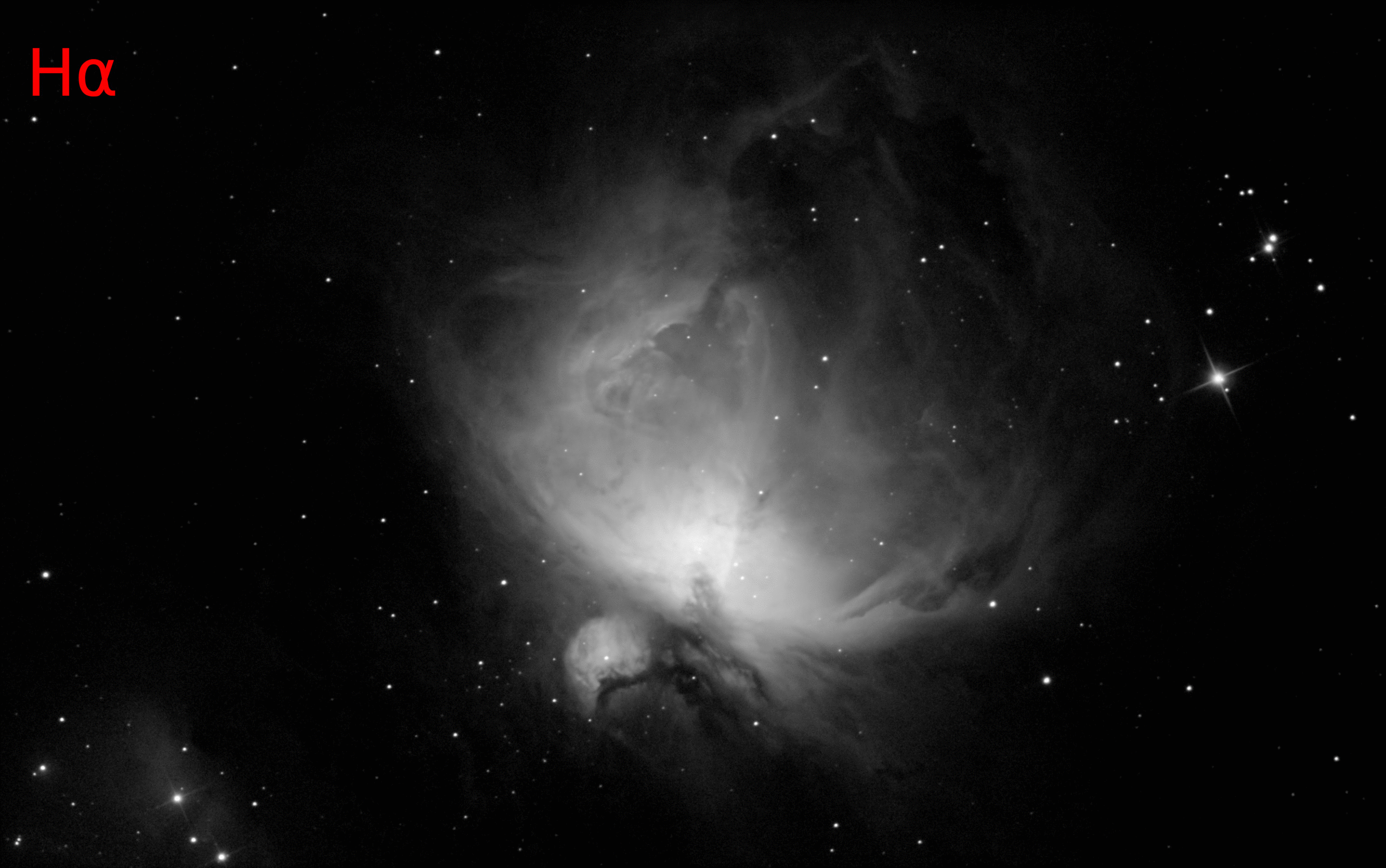Orion Nebula
M42, M43 and The Running Man Nebula
A spiral galaxy like our Milky Way contains a diffuse interstellar medium of gas, dust, and trace amounts of heavier elements produced by old, dying stars. Sometimes these clouds collapse under their own weight, triggering star formation. In Orion there are about 700 stars in different stages of formation.
Update
We shot some RGB data which we have stacked with the Hα and O-III data that was captured a few weeks ago. The frames were taken before the Moon (82%) rose. Avarage altitude of M42 was only 25°. Weather was 2°C, minimal wind, relative humidity 88%.
| Telescope | Skywatcher 200PDS (200/1000 Newton) |
| Filter | IDAS D2 (multi-bandpass light pollution filter) |
| Coma corrector | Skywatcher f/5 (0.9x) |
| Camera | Canon 7D Mark II |
| Resolution | 2560 x 1603 (cropped & scaled) |
| Light frames | 41/42, 2m @ ISO 1600, 82m in total |
| Dark frames | 39 |
| Bias frames | 30 |
| Flat frames | 22 |
| Location | Bolton, UK |
| Local time | 2021-03-02 20:03 - 21:54 |

Hα / O-III only version
This is our first shot with the Optolong L-eXtreme filter. Considering that the Moon was 85% illuminated and at altitude ~47°, only separated from M42 by ~31°, we were blown seeing the result. Weather was -2°C, no discernable wind, relative humidity 85%
Technically everything went well until the guidescope’s FOV was obstructed by a nearby roof; unfortunately we have lost 52 frames to that. All of the first 112 frames were fine so we call that a successful first run.
The processing was slighly different because this filter only has two narrow (7nm) bandpasses for Hα and O-III. We have extracted the two signals from the CFA images, processed them separately and combined them just before the finishing touches. In the resulting image the shades of red is Hydrogen and the shades of gray is Hydrogen mixed with Oxygen. The black parts are dust clouds in front of the nebula.


| Telescope | Skywatcher 200PDS (200/1000 Newton) |
| Filter | Optolong L-eXtreme (dual-bandpass narrowband) |
| Coma corrector | Skywatcher f/5 (0.9x) |
| Camera | Canon 7D Mark II |
| Resolution | 2560 x 1603 (cropped & scaled) |
| Light frames | 112, 30s @ ISO 800, 56m in total |
| Dark frames | 30 (plus 30 darkflats) |
| Bias frames | 30 |
| Flat frames | 30 |
| Location | Bolton, UK |
| Local time | 2021-01-24 20:56 - 23:16 |

2008 version
This second picture is from 2008, just a few old light frames about the Orion Nebula. Even without darks, autoguiding, dithering, coma corrector or filters this thing is still pretty awesome.

I have no idea why there were 87 bias frames next to the lights.
| Camera | Canon 400D |
| Telescope | Skywatcher 200/1000 Newton |
| Corrector | - |
| Resolution | 3888 x 2592 (cropped & scaled to 1953 x 1301) |
| Light frames | 6, 40s (4m total) @ ISO 400 |
| Dark frames | - |
| Bias frames | 87 |
| Flat frames | - |
| Location | Dorog, Hungary |
| Local time | 2008-12-28 22:01:37 - 22:05:18 |